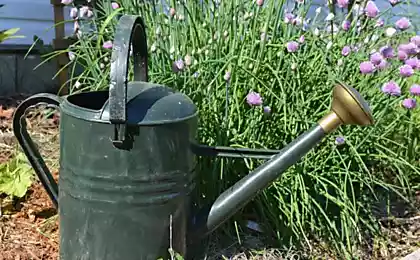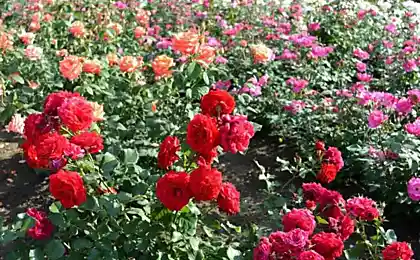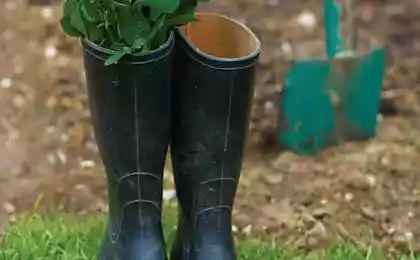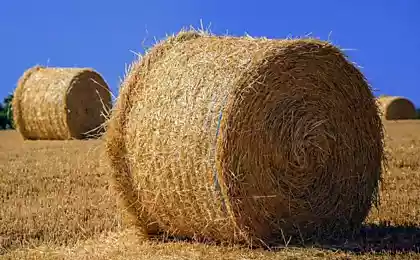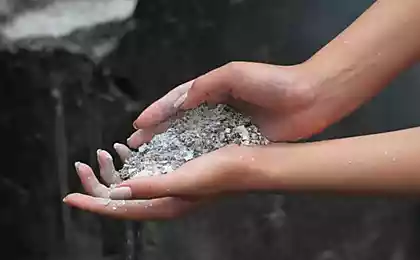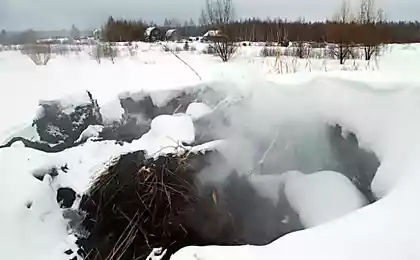639
How to cover roses for the winter
Often, removing the spring cover with roses, the growers feel a sense of bitterness — their Pets were blackened and covered with mold. But it spent so much effort, the bushes worked so hard to insulate for the winter, but all efforts were in vain. Owners often attribute such failure only with weak resilience of roses in the middle zone of Russia and are convinced that their Pets freeze.
In fact, the reasons for failure lie elsewhere. Successful overwintering roses is determined by the mandatory implementation of a number of agricultural activities throughout the summer as preparation for winter begins well before the onset of cold weather.

Before planting the bushes need to consider how to place roses in the area to the fall was convenient to hide them. In particular, it is necessary to leave free approach to planting, to provide a place where you will be laid shoots of climbing roses and where will be delivered to the shelter.
It is not desirable to plant near other crops that can be damaged when working with roses. This is especially important to consider for standard and climbing roses. Their shoots, be sure to save, since they will bloom the following year. The place chosen for laying the shoots should not be below the level of landings, are not suitable and roadside grooves — after all, there will accumulate in the spring water, which is detrimental to the roses. In an extreme case, the depressions can be lifted, pour the sand.
Rose light-loving and it is necessary to remember that the bushes that grew in the shade, the winter is worse because during the summer they do not have enough light for normal photosynthesis. As a result, the processes of accumulation of nutrients in the plant slow down.
Based on the principle of convenience, rose (Cinoherni, Puliancholai Floribunda) is better placed in rows 30-40 cm apart, given the age of the plant and the growth rate of the selected varieties.
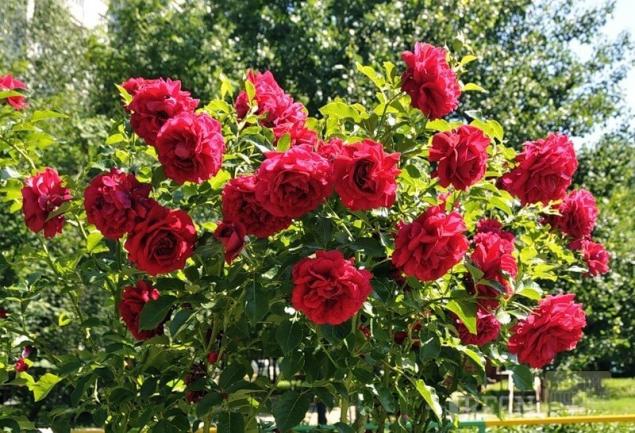
Small-flowered Polyanthus, Miniature or Groundcover roses are best planted as a solid border with a distance of 20-30 cm between the bushes, if the land is raw — more tightly. Then, when the autumn wetting the moisture is absorbed faster.
Bad winter, the weak plants. So, thoroughly sure that rose during the summer well-formed and increased healthy leaf mass. This can be achieved for prompt control of pests and diseases, and the roses very much.
Often hear from fans that they begin to respond when the bushes showed signs of the disease. If this happens in the second half of the summer, in the winter, the plant often dies. Sick roses shed their leaves, which stimulates the awakening of a new kidney. This phenomenon is highly undesirable in the second half of summer, because at the end of August — early September should carry out measures to slow and stop the growth of the shoots, otherwise they do not have time to ripen, and as a result the bushes overwinter poorly.
Disease should as a precautionary measure. In the spring, after removing the cover and throughout the vegetation period it is necessary to regularly (1 every 10 days), spray roses with Bordeaux liquid from various fungal diseases.
You can use a more effective modern fungicides, their use will significantly reduce the number of treatments. They sprayed the bushes will grow back when the majority of shoots and leaves. Be sure to repeat treatment every 10 days.
Good results for the prevention of powdery mildew gives two or three treatment per season during the hottest time of day of 0,3% solution of soda ash.
Pest control also needs to be regular. During the summer you should carefully collect and burn fallen leaves, cut the shoots regularly to destroy the weeds. Need not be lazy to gloss over the garden pitch all the slices on the branches, disinfect cutting tools in a solution of potassium permanganate (potassium permanganate).
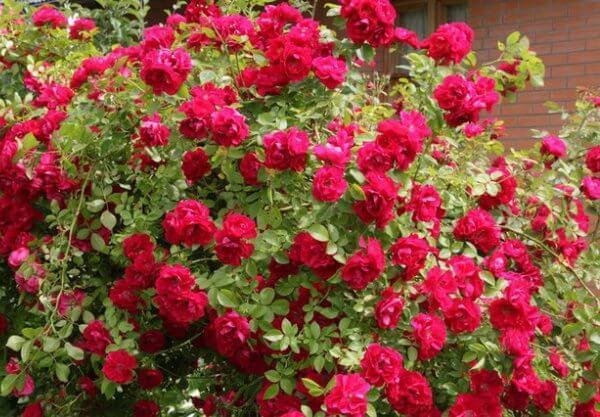
Only with proper and regular nourishment to the roses during the growing period, it is possible to achieve resistance to diseases and pests. Therefore, it is important to pay attention to feeding. They spend about 1 every 2 weeks.
In the spring, when it begins active growth of shoots, making fertilizer with a predominance of nitrogen. At this time, apply ammonium nitrate solution (20 g per 10 liters of water) or buried in the soil in dry (40 g per 1 m2).
Dressing for summer is better to use fermented manure (1:10) one bucket of infusion for 4 plants. Useful foliar feeding of micronutrients. In August, begin to make phosphorus-potassium fertilizer (30 g of potassium sulfate and 40 g of superphosphate per 10 liters of water). They promote aging shoots. Physiologically active substances (HUMATE sodium, albumin, EPIN), which stimulates growth, can be used only in the first half of the summer.
Since mid-August, all agricultural activities should be aimed at braking and stopping of the growing season. This will reduce or completely stop, depending on the weather, watering.
Sometimes, too rainy in the autumn, over the bushes stretched polyethylene film, to somehow reduce the entry of moisture.
You can make furrows for drainage of the rosary. If some shoots continue to develop rapidly, have their ends pinched, causing growth inhibition and accelerate aging. Otherwise these shoots over the winter to die.
Too abundant flowering in late autumn can also lead to weakening of the plants due to spending a large amount of nutrients. To pause this process, escape from the base of the Bud is bent. The result is the inhibition of apical growth and lateral buds don't Wake up.
Rose no pronounced rest period, so even a temporary increase in temperature to 0 °C in winter stimulates growth. That is why it is very important to choose the optimal timing for the shelter of the bushes.
If you start too early, you'll have to remove the leaves that will lead to the cessation of photosynthesis. The delay may cause damage to shoots from early frosts.
By lowering the temperature to minus 3° water in the stems freezes and bursts the conductive vessels. Formed monotony, which include pathogens, e.g. fungal spores. Subsequently, these shoots have to be cut on the ring.
To treat monotony very difficult, and the loss of escape weakens the Bush.
Sometimes the first frosts occur early in September and then another long weather is warm. If after such frost rose slowly thawed, the cells are conductive vessels to return to normal.
To slow down thawing, shrubs can cover with paper, fabric, spray with water.
Pre-define when and what powers would be early cold impossible. To be safe from the first frost in the autumn, I recommend to use a phased shelter of roses.
For this first you need to prepare: gently sleeps the leaves from the bottom of the hive, carefully moisten it and the surrounding ground from the watering can a 3% solution of ferrous sulfate (product burn the leaves, so they are removed). Then the base of the shoots sprinkled with sand (2 shovels per Bush).
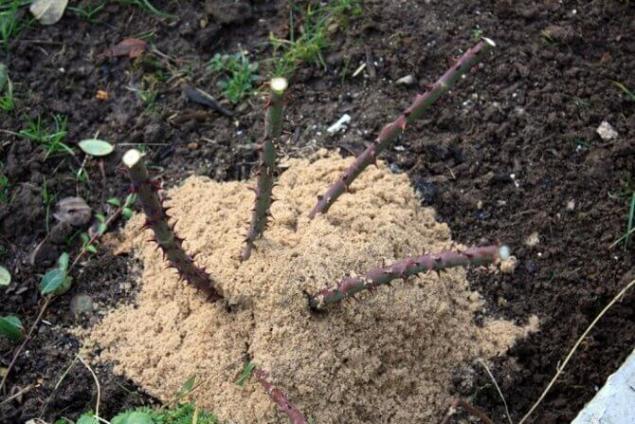
At a temperature slightly above 0° roses cease to grow, nutrients are no longer consumed, and beginning to be deposited in the cortex, the heart, kidneys and roots. The result is a natural hardening, which allows the roses to survive in the winter. Accumulated nutrients will be of great value in the spring revival of plants. These processes occur only in the light, that is why it is undesirable too early shelter.
Further annealing of roses takes place in late autumn, when the temperature is set within minus 2-8°. At this time the shoots will lose a significant amount of water. Starch begins to move in sugar, which prevents the cells of the rose to freeze. For the second phase does not require light, and the lack of leaves does not affect the process.
It was at this moment need to carry out the final stage of the shelter. He usually falls on the first decade of November. Any remaining leaves are removed, the roses are cut at a height of 40-45 cm, are sprayed with the upper part of the shoots of 2% solution of nitrogen and covered with bushes, insulated material: sawdust (3 buckets on a Bush), earth, dry leaves or peat.
The use of land as a shelter, it is harvested and dried in advance.
Preferred softwood sawdust.
Peat mixed with a small amount of sand to avoid caking and breathable.
Sawdust and peat is a very absorbent material, they have the ability to freeze quickly and thaw slowly. Given that in Central Russia winters are unstable and often alternate with thaws, this property of peat and sawdust allows to support under the shelter of a constant temperature.
To scare away the mice in the insulated material can be put spruce branches, or use naphthalene tablets, lumps of sawdust, soaked with strong-smelling substances (kerosene, creolin).
Winter need to make sure that the wind blew the snow. His detention can be set shields to put on top of the branch.
In Central Russia is a phased shelter roses can be considered the best option.
This method has one drawback — the bushes should be cut, so as completely to conceal them. Of course, we must strive to preserve the shoots, then in the new season's roses will bloom well. To do this, if possible, their bends.
There are other shelters. Reliable protection is considered air dried. It represents the frame height 50— 60 cm, which is made in the form of a small greenhouse out of a metal rod, bent pipes, etc. connected by wire.
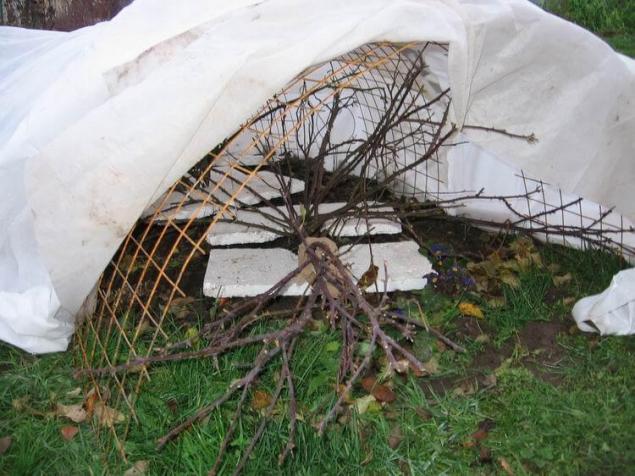
The frame is mounted above the roses in the beginning of October, until the ground froze solid. The bushes released from the lower leaves, treated with 3% solution of ferrous sulfate and Spud sand. Before the frost they are linked. Use only synthetic twine, which does not absorb moisture and does not get moldy. Associated shoots gradually begin to bend to the ground.
This work is carried out to frost, while the branches remain flexible, otherwise you may break them or they will crack the bark. Too thick stiff shoots cut at a height that is between them and the roof of the shelter had space 10-25 cm
With the onset of the first frost, pluck the remaining leaves. This operation should certainly be performed, otherwise roses with leaves in the woods will continue to "breathe", creating high humidity and causing the formation of mold. On frame stack the roofing material, leaving the ends open until the permanent cold (minus 8 degrees). Then they close down. On top of the roofing material and pull the film to completely prevent the ingress of moisture, the edges of her strengthen. All construction must be robust, to withstand thick snow cover.
The raw area where close are ground water, air dry, cover can not be used. Under it will accumulate condensation and roses in a humid environment will start to damp out.
Climbing roses before the first frost is removed from the supports, remove the leaves treated with iron sulphate, bind and stack on a piece of roofing material. Then shoots covered with sand, and upon the occurrence of resistant frost cover another piece of roofing material, which is fixed with the help of improvised means.
It should not be used for shelter materials quickly decaying and absorbent, for example, hay, straw, moss.
Also interesting: Groundcover rose —colored carpet in Your garden
Remontant roses
Important it is possible to consider and the selection of hardy varieties of roses. It is known that rose is quite resistant and winter in the suburbs without shelter. Their only Crouch, so under the snow was shoots with buds.
Of the other groups Climbing and more winter hardy Polyanthus.
Grafted roses are more tolerant to the winter than own-rooted.published
Author: Cherencov O.
Source: www.kicha.ru/Publics/Pb7.htm
In fact, the reasons for failure lie elsewhere. Successful overwintering roses is determined by the mandatory implementation of a number of agricultural activities throughout the summer as preparation for winter begins well before the onset of cold weather.

Before planting the bushes need to consider how to place roses in the area to the fall was convenient to hide them. In particular, it is necessary to leave free approach to planting, to provide a place where you will be laid shoots of climbing roses and where will be delivered to the shelter.
It is not desirable to plant near other crops that can be damaged when working with roses. This is especially important to consider for standard and climbing roses. Their shoots, be sure to save, since they will bloom the following year. The place chosen for laying the shoots should not be below the level of landings, are not suitable and roadside grooves — after all, there will accumulate in the spring water, which is detrimental to the roses. In an extreme case, the depressions can be lifted, pour the sand.
Rose light-loving and it is necessary to remember that the bushes that grew in the shade, the winter is worse because during the summer they do not have enough light for normal photosynthesis. As a result, the processes of accumulation of nutrients in the plant slow down.
Based on the principle of convenience, rose (Cinoherni, Puliancholai Floribunda) is better placed in rows 30-40 cm apart, given the age of the plant and the growth rate of the selected varieties.

Small-flowered Polyanthus, Miniature or Groundcover roses are best planted as a solid border with a distance of 20-30 cm between the bushes, if the land is raw — more tightly. Then, when the autumn wetting the moisture is absorbed faster.
Bad winter, the weak plants. So, thoroughly sure that rose during the summer well-formed and increased healthy leaf mass. This can be achieved for prompt control of pests and diseases, and the roses very much.
Often hear from fans that they begin to respond when the bushes showed signs of the disease. If this happens in the second half of the summer, in the winter, the plant often dies. Sick roses shed their leaves, which stimulates the awakening of a new kidney. This phenomenon is highly undesirable in the second half of summer, because at the end of August — early September should carry out measures to slow and stop the growth of the shoots, otherwise they do not have time to ripen, and as a result the bushes overwinter poorly.
Disease should as a precautionary measure. In the spring, after removing the cover and throughout the vegetation period it is necessary to regularly (1 every 10 days), spray roses with Bordeaux liquid from various fungal diseases.
You can use a more effective modern fungicides, their use will significantly reduce the number of treatments. They sprayed the bushes will grow back when the majority of shoots and leaves. Be sure to repeat treatment every 10 days.
Good results for the prevention of powdery mildew gives two or three treatment per season during the hottest time of day of 0,3% solution of soda ash.
Pest control also needs to be regular. During the summer you should carefully collect and burn fallen leaves, cut the shoots regularly to destroy the weeds. Need not be lazy to gloss over the garden pitch all the slices on the branches, disinfect cutting tools in a solution of potassium permanganate (potassium permanganate).

Only with proper and regular nourishment to the roses during the growing period, it is possible to achieve resistance to diseases and pests. Therefore, it is important to pay attention to feeding. They spend about 1 every 2 weeks.
In the spring, when it begins active growth of shoots, making fertilizer with a predominance of nitrogen. At this time, apply ammonium nitrate solution (20 g per 10 liters of water) or buried in the soil in dry (40 g per 1 m2).
Dressing for summer is better to use fermented manure (1:10) one bucket of infusion for 4 plants. Useful foliar feeding of micronutrients. In August, begin to make phosphorus-potassium fertilizer (30 g of potassium sulfate and 40 g of superphosphate per 10 liters of water). They promote aging shoots. Physiologically active substances (HUMATE sodium, albumin, EPIN), which stimulates growth, can be used only in the first half of the summer.
Since mid-August, all agricultural activities should be aimed at braking and stopping of the growing season. This will reduce or completely stop, depending on the weather, watering.
Sometimes, too rainy in the autumn, over the bushes stretched polyethylene film, to somehow reduce the entry of moisture.
You can make furrows for drainage of the rosary. If some shoots continue to develop rapidly, have their ends pinched, causing growth inhibition and accelerate aging. Otherwise these shoots over the winter to die.
Too abundant flowering in late autumn can also lead to weakening of the plants due to spending a large amount of nutrients. To pause this process, escape from the base of the Bud is bent. The result is the inhibition of apical growth and lateral buds don't Wake up.
Rose no pronounced rest period, so even a temporary increase in temperature to 0 °C in winter stimulates growth. That is why it is very important to choose the optimal timing for the shelter of the bushes.
If you start too early, you'll have to remove the leaves that will lead to the cessation of photosynthesis. The delay may cause damage to shoots from early frosts.
By lowering the temperature to minus 3° water in the stems freezes and bursts the conductive vessels. Formed monotony, which include pathogens, e.g. fungal spores. Subsequently, these shoots have to be cut on the ring.
To treat monotony very difficult, and the loss of escape weakens the Bush.
Sometimes the first frosts occur early in September and then another long weather is warm. If after such frost rose slowly thawed, the cells are conductive vessels to return to normal.
To slow down thawing, shrubs can cover with paper, fabric, spray with water.
Pre-define when and what powers would be early cold impossible. To be safe from the first frost in the autumn, I recommend to use a phased shelter of roses.
For this first you need to prepare: gently sleeps the leaves from the bottom of the hive, carefully moisten it and the surrounding ground from the watering can a 3% solution of ferrous sulfate (product burn the leaves, so they are removed). Then the base of the shoots sprinkled with sand (2 shovels per Bush).

At a temperature slightly above 0° roses cease to grow, nutrients are no longer consumed, and beginning to be deposited in the cortex, the heart, kidneys and roots. The result is a natural hardening, which allows the roses to survive in the winter. Accumulated nutrients will be of great value in the spring revival of plants. These processes occur only in the light, that is why it is undesirable too early shelter.
Further annealing of roses takes place in late autumn, when the temperature is set within minus 2-8°. At this time the shoots will lose a significant amount of water. Starch begins to move in sugar, which prevents the cells of the rose to freeze. For the second phase does not require light, and the lack of leaves does not affect the process.
It was at this moment need to carry out the final stage of the shelter. He usually falls on the first decade of November. Any remaining leaves are removed, the roses are cut at a height of 40-45 cm, are sprayed with the upper part of the shoots of 2% solution of nitrogen and covered with bushes, insulated material: sawdust (3 buckets on a Bush), earth, dry leaves or peat.
The use of land as a shelter, it is harvested and dried in advance.
Preferred softwood sawdust.
Peat mixed with a small amount of sand to avoid caking and breathable.
Sawdust and peat is a very absorbent material, they have the ability to freeze quickly and thaw slowly. Given that in Central Russia winters are unstable and often alternate with thaws, this property of peat and sawdust allows to support under the shelter of a constant temperature.
To scare away the mice in the insulated material can be put spruce branches, or use naphthalene tablets, lumps of sawdust, soaked with strong-smelling substances (kerosene, creolin).
Winter need to make sure that the wind blew the snow. His detention can be set shields to put on top of the branch.
In Central Russia is a phased shelter roses can be considered the best option.
This method has one drawback — the bushes should be cut, so as completely to conceal them. Of course, we must strive to preserve the shoots, then in the new season's roses will bloom well. To do this, if possible, their bends.
There are other shelters. Reliable protection is considered air dried. It represents the frame height 50— 60 cm, which is made in the form of a small greenhouse out of a metal rod, bent pipes, etc. connected by wire.

The frame is mounted above the roses in the beginning of October, until the ground froze solid. The bushes released from the lower leaves, treated with 3% solution of ferrous sulfate and Spud sand. Before the frost they are linked. Use only synthetic twine, which does not absorb moisture and does not get moldy. Associated shoots gradually begin to bend to the ground.
This work is carried out to frost, while the branches remain flexible, otherwise you may break them or they will crack the bark. Too thick stiff shoots cut at a height that is between them and the roof of the shelter had space 10-25 cm
With the onset of the first frost, pluck the remaining leaves. This operation should certainly be performed, otherwise roses with leaves in the woods will continue to "breathe", creating high humidity and causing the formation of mold. On frame stack the roofing material, leaving the ends open until the permanent cold (minus 8 degrees). Then they close down. On top of the roofing material and pull the film to completely prevent the ingress of moisture, the edges of her strengthen. All construction must be robust, to withstand thick snow cover.
The raw area where close are ground water, air dry, cover can not be used. Under it will accumulate condensation and roses in a humid environment will start to damp out.
Climbing roses before the first frost is removed from the supports, remove the leaves treated with iron sulphate, bind and stack on a piece of roofing material. Then shoots covered with sand, and upon the occurrence of resistant frost cover another piece of roofing material, which is fixed with the help of improvised means.
It should not be used for shelter materials quickly decaying and absorbent, for example, hay, straw, moss.
Also interesting: Groundcover rose —colored carpet in Your garden
Remontant roses
Important it is possible to consider and the selection of hardy varieties of roses. It is known that rose is quite resistant and winter in the suburbs without shelter. Their only Crouch, so under the snow was shoots with buds.
Of the other groups Climbing and more winter hardy Polyanthus.
Grafted roses are more tolerant to the winter than own-rooted.published
Author: Cherencov O.
Source: www.kicha.ru/Publics/Pb7.htm
Elon Musk said, as the colonists will live on Mars
Rafidi – a reliable way to maintain stable weight loss
